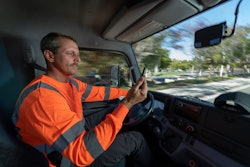Ask veteran drivers about the good ol’ days in trucking and they’ll tell you stories about friends they worked with, loads they hauled, trucks they drove and coming home for a holiday or a kid’s game on the weekend.
You know what you won’t hear about? Waiting in line for a payphone. Achy hips and knees from shifting gears. Paper HOS logs and shipping documents. Jockeying for a parking space. Ceaseless messages from dispatchers or freight brokers asking where they are and when they’ll arrive. Being routed places they don’t like to go.
Mobile connectivity and digital workflows have changed the driver’s workday for the better. Artificial intelligence and machine learning promise to automate all kinds of tedious tasks and align the job with the driver’s personal preferences.
Here are four ways technology has changed the day-to-day job for drivers, and one big development that shows why the best days may actually lie ahead.
No trucker likes handling paperwork, especially in the cab. It’s difficult to keep organized and adds the task of “courier” to the truck driver’s ever-expanding unwritten job description.
Electronic bills of lading (eBOL) and other digital documents make exchanging paperwork with carriers, brokers, shippers, receivers and other parties faster, more accurate and more secure. No one is waiting for a driver to return to the terminal days or weeks later with proof of delivery, bills of lading, lumper receipts and other records that are essential to carriers producing an invoice with all the right supporting documents.
Even better, no one has to try to decipher handwriting. With the right hardware and software, companies can receive, digitize, sign and electronically catalog shipping documents. This reduces the risk of errors and extra phone calls. Optical character recognition (OCR) technology can verify different types of trip documents, extract the data and reconcile shipment details with documentation.










